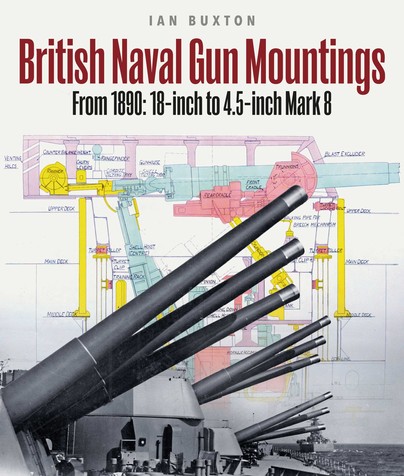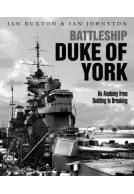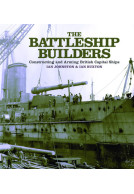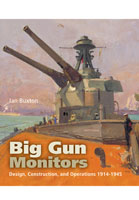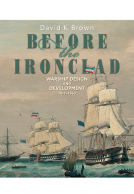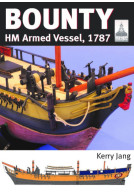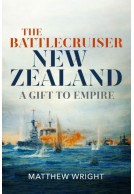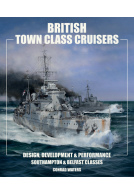British Naval Gun Mountings (ePub)
From 1890: 18-inch to 4.5-inch Mark 8

File Size: 99.0 MB (.epub)
Illustrations: 80 colour illustrations, 80 mono illustrations
ISBN: 9781399030991
Published: 30th September 2024
| Other formats available | Price |
|---|---|
| British Naval Gun Mountings Hardback Add to Basket | £33.75 |
Heavy gun mountings dominated the design of larger warships, on account of their size, weight, protection and cost. In the 1890s, British gun mountings developed rapidly with new gun technologies (wire winding, cordite) and the rise of the two major ordnance companies, Armstrongs and Vickers, producing large numbers of weapons for the Royal Navy and for worldwide export. But by 1960, aircraft and guided missiles had made the big gun redundant, so the period from 1890s to 1950s covering the two world wars is the most historically significant.
The focus of this book is on the larger mountings and those fitted in the larger ships – the massively engineered ‘non transferable’ mountings, whose complexities and associated magazines took up a huge volume of the ship, unlike the smaller calibre ‘transferable’ mountings mostly bolted to the deck. Such mountings could weigh over 1000 tons, take two years to build and make up a quarter of the cost of a battleship.
Although they existed in many variants, there were only about forty basic mountings from 4.5in to 18in calibre fitted to the majority of the RN’s larger ships so these take up the bulk of the book. For each, well illustrated handbooks with coloured plates were produced, but are largely inaccessible to the public, so about 50 of these highly detailed drawings are reproduced at large scale. The smaller mountings and the guns themselves each have a separate chapter.
Although the impact of the book is largely visual, there is an expert account of the design, construction and installation of such mountings, and their manufacturers, supported by a range of internal and close-up photographs. The reference value of the work is enhanced by a comprehensive table of mountings and their characteristics, plus a list of all the mountings made by Vickers of Barrow between 1900 and 1950.
Providing easy access to so much rarely seen material, this handsome volume will appeal to modelmakers, ship enthusiasts and technical historians.
Being very impressed with this authors earlier work ‘Big Gun Monitors’, rightly or wrongly I had quite high expectations for this book and I am pleased to say I was not disappointed!
The Wessex Branch of the Western Front Association
The structure of the book is complemented by a glossary of abbreviations (very useful to the novice), detailed chapter headings, appendices, sources, bibliography and a detailed index all make this the most useful of reference work as well as being a highly readable work for those with a more than superficial interest in the topic. In providing easy access to so much rarely seen material, this handsome volume will appeal to modelmakers, ship enthusiasts and technical historians. Definitely one for bookshelf, highly recommended!
Whilst not a book for the faint-hearted, it is undoubtedly a significant achievement and must surely be the definitive reference work on this topic. Painstakingly researched, an astonishing amount of detail is provided, supplemented with B&W and colour drawings and evocative photographs of ships and mountings. Many of these images are of mountings under construction in the manufacturers’ works, whilst others are of ship’s both under construction and being scrapped, the latter providing revealing aspects of gun mountings not normally apparent. Well-written and clearly presented, Ian Buxton is to be congratulated on his expert account of this important aspect of 20th century naval ship construction.
The Naval Review
Read the full review here
"It surpasses previous books on this subject, many of which are in any case out of print, and can therefore be considered to fall into the essential category for a wide range of readers. This is especially so in the case of the heavy mountings that form the largest part of the text, illustrations and drawings and, since we are unlikely ever to see their like again, this book may well become the last word on the subject. I thoroughly recommend it."
Australian Naval Institute
Read the full review here
About Ian Buxton
IAN BUXTON is a naval architect who was Reader in Marine Transport at the Department of Marine Technology at the University of Newcastle-upon-Tyne from 1974-2002. The Marine Technology Special Collection and the British Shipbuilding Database of 80,000 British-built ships have been a major focus in recent years. In 2021 he was awarded an MBE for services to the preservation of British maritime history. He has written numerous articles dealing with technical shipping and shipbuilding issues.







